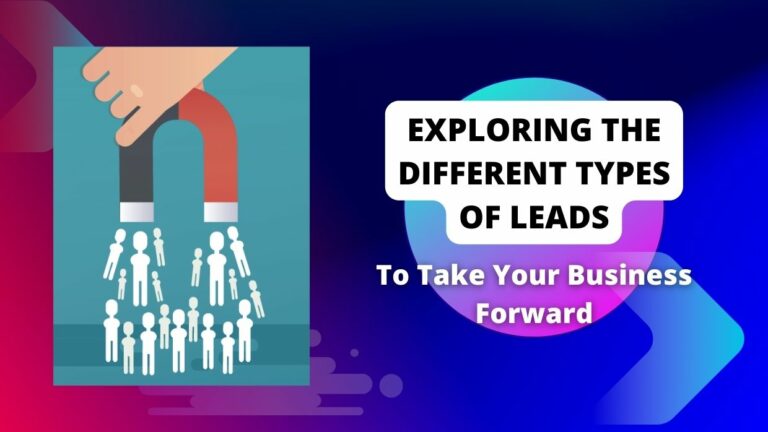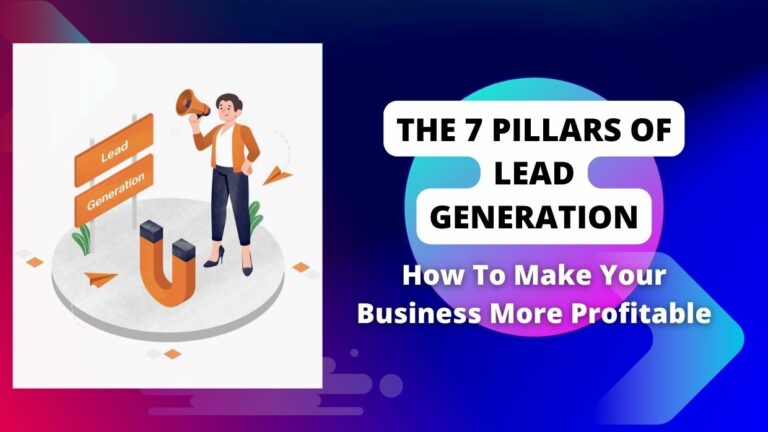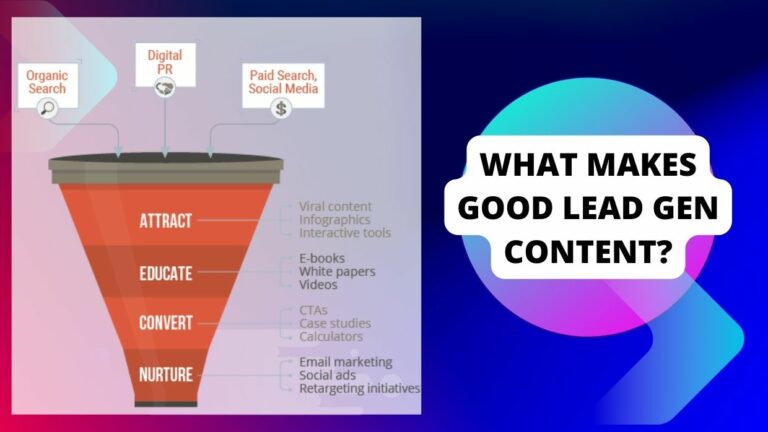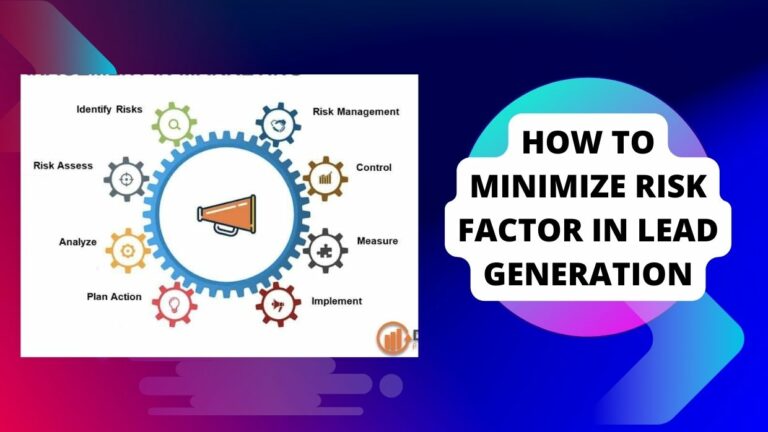How to Target Audience in Lead Generation
In this blog post, we’ll explore some strategies on “How to Target Audience in Lead Generation”. If you’re looking to generate leads and grow your business, then targeting the right audience is key. Without a clear understanding of who your ideal customer is, it’s hard to create effective marketing campaigns that will convert into sales. From defining buyer personas to leveraging social media platforms, we’ve got tips and tricks that are sure to help you connect with potential customers and drive growth for your business. So let’s dive in!
Overview of Lead Generation
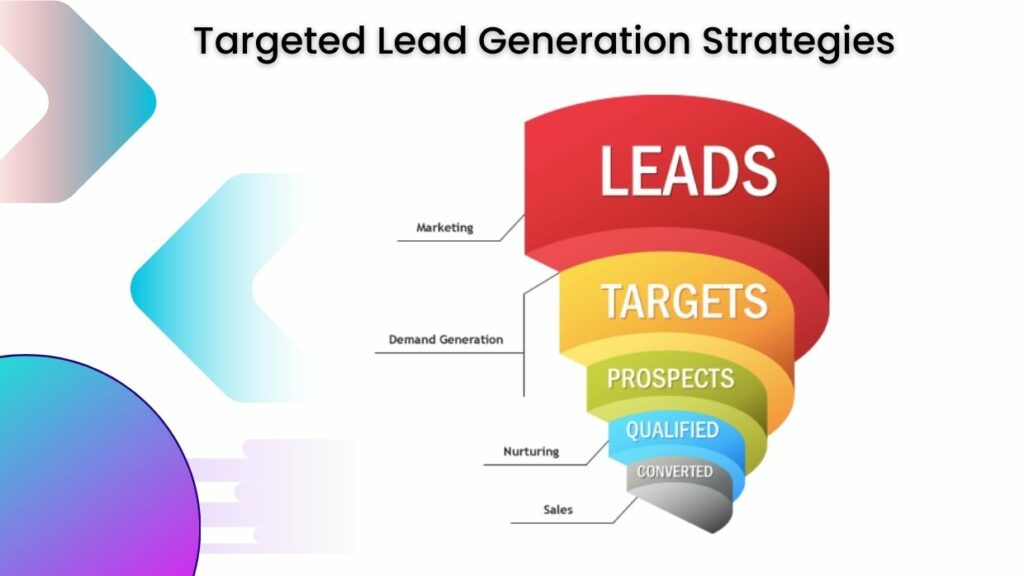
As the first step in the lead generation process, it is essential to understand your target audience. This means taking the time to research your potential customers and getting to know their needs and wants.
Once you have a good understanding of your target audience, you can start to create content that will appeal to them. This could include blog posts, eBooks, infographics, or even videos. Whatever content you create, make sure it is high quality and helpful.
Once you have some great content, you can start promoting it through various channels such as social media, email marketing, or even paid advertising. The key is to get your content in front of as many people as possible so that you can generate leads and sales.
Identifying Your Target Audience
The first step in generating leads is to identify your target audience. This can be done by considering who your product or service is best suited for, and then targeting those individuals with your marketing efforts. There are a number of ways to identify your target audience, including:
- Conducting market research: This can be done through surveys, focus groups, or other research methods to gain insights into who is most likely to be interested in your product or service.
- Analyzing your current customer base: If you already have customers, look at who they are and what characteristics they share to help you identify other potential customers.
- Defining your ideal customer: Consider who you would like to work with and what type of person would be most likely to need or want your product or service.
Once you have a better understanding of who your target audience is, you can start developing marketing strategies to reach them. This may include creating targeted ad campaigns, developing content that appeals to them, and/or attending events or trade shows that they are likely to attend.
Segmenting Your Audience
As a lead generation marketer, one of your primary goals is to target your audience as precisely as possible. The more accurately you can target your audience, the more likely you are to generate leads that convert into customers.
One of the most effective ways to target your audience is to segment them into smaller groups. By segmenting your audience, you can more accurately target them with specific messages that are relevant to their needs and interests.
There are a number of different ways that you can segment your audience. One common way is to segment them by demographics such as age, gender, location, or income level. Another way to segment your audience is by their interests or needs. For example, you could segment your audience into those who are interested in fitness, those who are interested in fashion, and those who are interested in travel.
Once you have segmented your audience into smaller groups, you can then start to create targeted messages for each group. These messages should be designed to appeal to the specific needs and interests of each group. By doing this, you will be able to generate leads that are much more likely to convert into customers.
Creating Content to Reach Your Audience
Creating content to reach your audience can be a challenge, but it’s important to consider your audience when planning your content strategy. There are a few things to keep in mind when creating content for lead generation:
Who is your target audience?
Think about who you want to reach with your content. What are their needs and interests? What kind of information will they be looking for? Keep these questions in mind when creating your content.
What type of content will resonate with your audience?
There are many different types of content you can create, so it’s important to choose the right one for your audience. If you’re not sure what type of content will work best, try experimenting with different formats and see what gets the best results.
How often should you create new content?
It’s important to keep your audience engaged by regularly creating new content. But don’t overwhelm them with too much information at once – focus on quality over quantity. A good rule of thumb is to create new content every week or two.
What platforms will you use to share your content?
Choose the right social media channels and other platforms to share your content. Consider where your target audience spends most of their time online, and create a strategy for sharing your content on those platforms.
Creating content to reach your audience can be a challenge, but with the right strategies and tactics in place you can successfully engage them. Keep these tips in mind when creating your content marketing strategy and you’ll be well on your way to success!
Learn more… What Is Lead Management in Marketing
Leveraging Paid Advertising & Social Media Platforms to Reach Out to Potential Leads
When it comes to lead generation, businesses need to get creative in order to reach their target audiences. Paid advertising and social media platforms are two great ways to do this.
Paid advertising allows businesses to specifically target their audience with laser precision. Businesses can use demographic data, interests, and even purchase history to create targeted ads that reach the right people.
Social media platforms like Facebook and Twitter also offer businesses powerful tools for targeting their audience. By creating detailed buyer personas, businesses can make sure that their social media content is seen by the people who are most likely to be interested in it.
Both paid advertising and social media platforms can be extremely effective in reaching potential leads. By taking advantage of these tools, businesses can ensure that they are getting in front of the right people and generating quality leads.
Tracking Results and Analyzing the Data
The most important part of lead generation is tracking results and analyzing the data. By doing this, you can determine which methods are working and which need to be improved.
There are a few key metrics that you should track:
- The number of leads generated: This is the most important metric to track. You need to know how many leads you’re generating in order to determine your return on investment (ROI).
- Cost per lead: This metric will help you determine how much you’re spending on lead generation. The lower the cost per lead, the more efficient your campaign is.
- Conversion rate: This is the percentage of leads that convert into customers. A high conversion rate means that your lead generation campaign is effective.
Once you’ve tracked these metrics, you can start to analyze the data. Look for patterns and trends in the data so that you can make changes to your campaign accordingly. For example, if you notice that your conversion rate drops off after the first few days of a campaign, you may need to change your offer or target a different audience.
Adjusting Tactics Based on the Results
The most important part of lead generation is targeting your audience. You can have the best product or service in the world, but if you’re not reaching the right people, it won’t matter. Luckily, there are a number of ways to target your audience so that you can get the most out of your lead generation efforts.
One way to target your audience is to adjust your tactics based on the results you’re getting. If you’re not seeing the results you want, try something different. For example, if you’re using Pay-Per-Click (PPC) ads and they’re not performing well, try using a different type of ad or changing your keywords.
If you’re using email marketing and you’re not getting a good response rate, try changing your subject lines or the content of your emails. The key is to experiment until you find what works for your business.
Another way to target your audience is to segment them into groups. This allows you to tailor your message to each group so that they are more likely to take action. For example, if you have a product that appeals to both men and women, you would want to create separate campaigns for each gender. This way, you can speak directly to each group and increase the likelihood that they will take action.
Finally, don’t forget about retargeting. This is when someone visits your website but doesn’t take action. You can then retarget them with ads that are tailored to their interests in order to get them to convert. Retargeting is a great way to make sure you’re getting the most out of your lead generation efforts.
Lead generation is an essential part of any business and it can be easy to get overwhelmed by all the different tactics available. However, if you take the time to target your audience and adjust your tactics based on the results you’re getting, you’ll be well on your way to success.
Read more… How To Create a Landing Page For Lead Generation
Conclusion
In conclusion, targeting an audience in lead generation is a crucial step that needs to be taken in order to ensure the success of your campaign. By utilizing powerful tools such as analytics and segmentation, you can narrow down your target audience and tailor campaigns specifically for them. This will help improve conversion rates and make sure that your leads are high quality and relevant to what your business offers. With a little bit of research and planning, you can have successful lead generation campaigns by targeting the right people for maximum return on investment.


